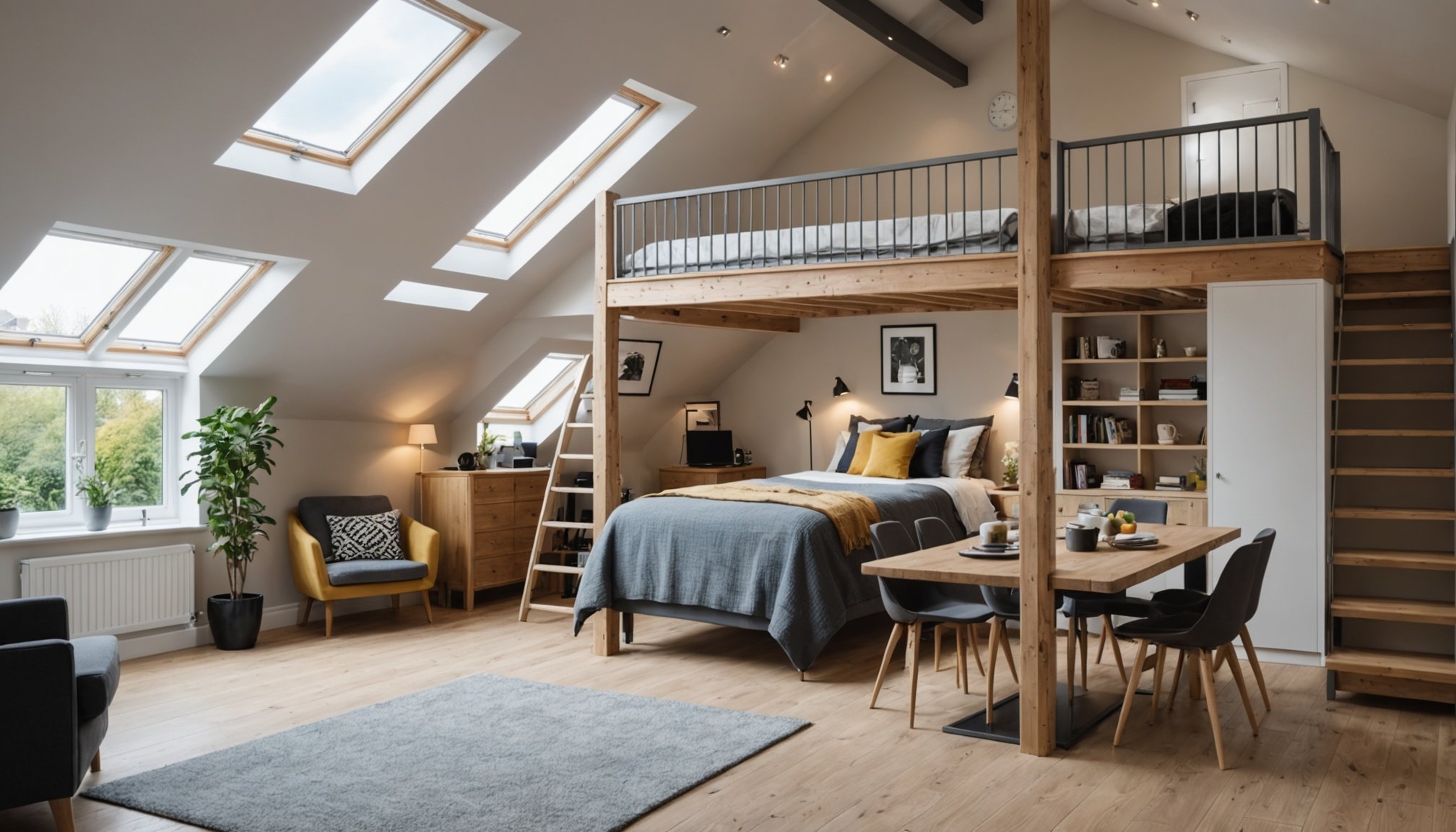Loft conversions are becoming increasingly popular as homeowners look for ways to maximise their existing space rather than moving into a bigger house. When done effectively, a loft conversion can add significant value to your home. But, one of the hottest trends in loft conversion design is the incorporation of a mezzanine. A mezzanine is a raised platform that is open to the floor below, often acting as a bedroom or additional living area. This article aims to provide you, homeowners, with top tips for successfully incorporating a mezzanine into your loft conversion project.
Understanding the Conversion Process
Before embarking on a loft conversion project, it’s crucial to understand what the conversion process entails. The first step is to assess the loft space to determine whether it’s suitable for a conversion. This assessment will include checking the height of the roof, the pitch, and the type of construction. The next step is to draft the design, which will include the loft conversion and the incorporation of the mezzanine. Following this, you’ll need to go through the planning permission process. It’s at this stage where you’ll need to consider factors such as building regulations, fire safety, and insulation.
Cela peut vous intéresser : Top UK Native Plants for Effortless Gardening: Your Guide to a Low-Maintenance Oasis
Incorporating a mezzanine into your loft conversion can come with its challenges. For instance, you’ll need to consider the head height available. To create a successful mezzanine level, you’ll need to have sufficient height in the existing loft space to allow for standing room on the mezzanine and comfortable living space below it.
The Importance of Design
The design phase is crucial for a successful mezzanine loft conversion. It’s not just about creating an additional room, but also how the room will function and fit with the rest of the house. It’s important to consider how the light will flow through the space, how the furniture will be arranged, and how the space will be accessed.
A lire en complément : What are the best hypoallergenic fabric choices for UK bedrooms?
Keep in mind that the mezzanine should enhance the look and feel of the loft space, not disrupt it. As a rule of thumb, the mezzanine should take up no more than 50% of the total floor area. This will help to maintain an open, airy feel and avoid the loft feeling cramped or closed in.
Remember, the design of the mezzanine should also consider safety, especially if it will be used as a bedroom. Consider incorporating sturdy railings or glass balustrades for safety.
Building and Construction
Once you’ve got your design ready, the next step is the actual building and construction of the mezzanine. This will require experienced professionals who have a good understanding of the structural integrity of your home. The last thing you want is for the mezzanine to impact the structural stability of your home.
There are different ways to build a mezzanine, but typically, it will involve the installation of a floor platform and a staircase or ladder for access. Keep in mind that the construction of a mezzanine will add additional weight to the structure of your home, so proper reinforcement will be required.
Cost Consideration
Loft conversions can be costly, and incorporating a mezzanine will add to the overall cost. The cost will depend on several factors, including the complexity of the design, the materials used, and the labour costs. Before starting the project, it’s important to get a clear estimate of the cost and be prepared for any unexpected expenses.
While a mezzanine may add to the overall cost of the loft conversion, keep in mind that it can also significantly increase the value of your home. Not only does it provide additional living space, but a well-designed and built mezzanine can also be a unique selling point.
Planning for the Future
When incorporating a mezzanine into your loft conversion, always plan for the future. Think about how your needs might change over time and ensure the design is flexible enough to accommodate these changes. For instance, while a ladder may suffice for accessing the mezzanine now, in the future you may prefer a staircase for ease of access.
Furthermore, consider the functionality of the mezzanine. While it may serve as a bedroom now, in the future it could be transformed into an office, a playroom, or a relaxation space. A well-planned mezzanine can provide you with a versatile space that can adapt to your changing needs.
Incorporating a mezzanine into your loft conversion can be an exciting project. With careful planning, a smart design, and expert construction, you can create a beautiful, functional space that adds significant value to your home. Remember, the key to a successful project is to take the time to plan carefully, think about your future needs, and hire experienced professionals to execute the build. Good luck with your loft conversion project!
Practical Tips for the Construction
Initiating the construction phase of your mezzanine loft conversion is an important milestone in your project. This is when your plans and design ideas come into action. However, the construction phase demands a great deal of attention to detail, patience, and adherence to building regulations.
Hiring an experienced builder or loft conversion company is non-negotiable at this stage. These professionals understand the intricate nature of such a project, including the need to reinforce the structure of your home to accommodate the additional weight of the mezzanine. They are also well-versed in ensuring compliance with building regulations and obtaining the necessary planning permission.
Remember to consider the access options to your mezzanine. A ladder might be a space-saving option, but a staircase could be more practical and safe, particularly if the mezzanine is to be used as a bedroom. The access point should be strategically placed, ideally away from windows to avoid blocking natural light.
Consider how you want the natural light to flow in your new space. You may wish to incorporate large windows or skylights into your house plans to ensure your mezzanine and the space below it receive ample sunlight.
Insulation is another critical factor to consider. Proper insulation is not just about complying with energy efficient standards; it can also make your new living space more comfortable and help reduce energy bills.
Making the Most of Your New Space
Once your mezzanine loft conversion is complete, it’s time to put it to good use. Whether you’ve decided to use it as an additional bedroom, a home office, or a relaxation space, the aim should be to make it a comfortable, functional, and aesthetically pleasing part of your home.
One way to maximise the use of your new space is through clever interior design. The furniture and decor you choose should complement the overall style of your home, but also be functional and appropriate for the intended use of the mezzanine. For example, if it is to be used as a home office, a desk with plenty of storage and a comfortable chair are must-haves.
Regardless of the intended use of your mezzanine, it’s essential to maintain a sense of openness. Avoid cluttering the area with too much furniture and aim for a balance of comfort and practicality. Furthermore, keep in mind that natural light plays a vital role in making a space feel larger and more welcoming.
In conclusion, incorporating a mezzanine into your loft conversion requires careful planning and consideration. From understanding the conversion process, through the design phase, construction, and eventually to the utilisation of the new space, you need to pay attention to every detail. Compliance with building regulations and acquiring the necessary planning permission is also of utmost importance. However, with the right design, experienced professionals, and a clear vision, your mezzanine loft conversion can significantly enhance your living space and potentially increase the value of your home.






